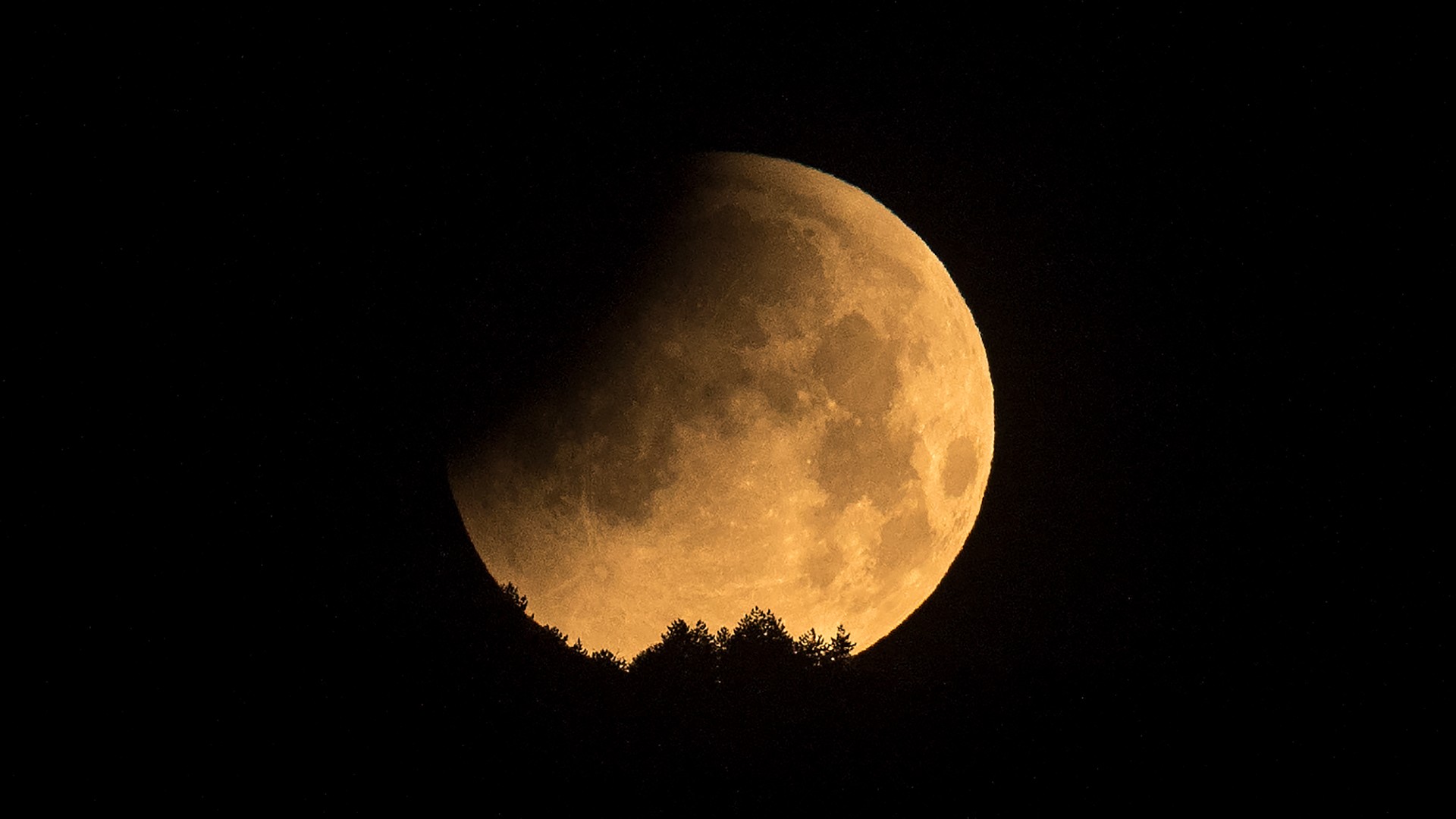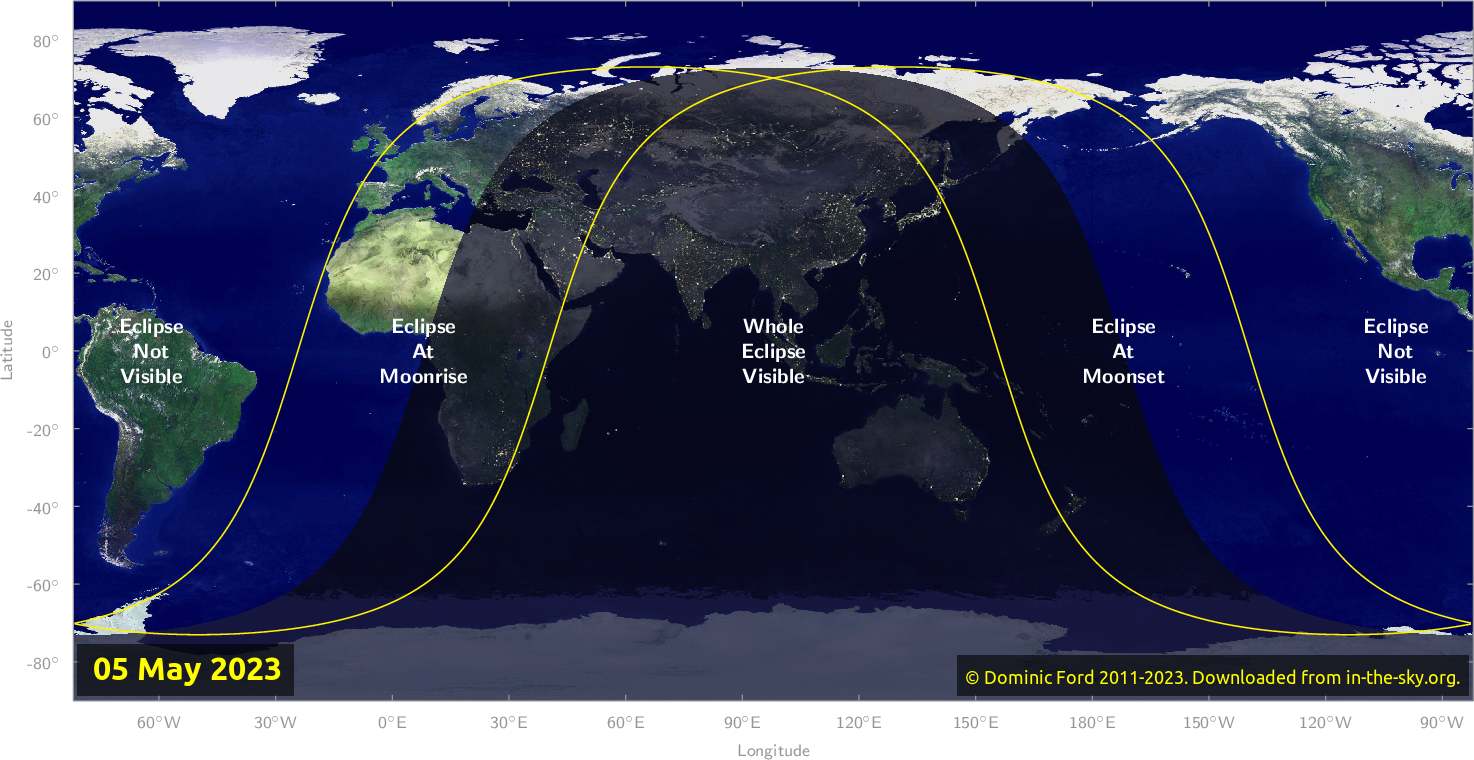A lunar eclipse is coming on May 5. Here's what you need to know
The moon will darken but not completely disappear as it slips into Earth's outer shadow on Friday (May 5), creating a penumbral lunar eclipse.

The moon will pass into the outer shadow of the Earth on Friday (May 5), creating an astronomical event called a penumbral eclipse. During the eclipse, skywatchers will see the moon darken but not completely disappear.
The penumbral lunar eclipse will begin at 11:15 EDT a.m. (1515 GMT) and will be visible from anywhere on the globe where the moon is over the horizon, including Antarctica, Asia, Russia, Oceania and Eastern and Central Africa. The event will peak at 1:24 p.m. EDT (1724 GMT) and will end at 3:32 p.m. EDT (1932 GMT) when the moon emerges from the Earth's shadow.
According to In the Sky, the penumbral eclipse will not be visible at all from North America, South America or most of Europe as the moon will be below the horizon for the entire time it is in Earth's shadow.
Related: Lunar eclipses 2023: When, where & how to see them

Looking for a telescope to observe the moon or anything else in the sky? We recommend the Celestron Astro Fi 102 as the top pick in our best beginner's telescope guide.
Like all lunar eclipses, penumbral eclipses occur as a result of Earth passing between the moon and the sun with the three bodies in a straight line. This results in the shadow of our planet falling on the moon's face as Earth blocks the light from the sun. This can lead to events that, unlike solar eclipses, can be subtle and difficult to observe.
A penumbral eclipse happens when the moon passes into the lighter outer region of the Earth's shadow which is called the penumbra. This is an area in which the Earth appears to cover part of the sun's disk but not all of it. This means when the moon is within the penumbra, it receives less light from the sun and is dimmed but still remains somewhat illuminated.

The resulting effect can be barely perceptible and is sometimes only visible in carefully-controlled photographs or by people with extremely acute eyesight. However, sometimes there are rare events in which the entire lunar face moves into the penumbra. These lunar eclipses cause a dimming that is more extreme and can be seen more easily by the unaided eye. These events are called total penumbral eclipses and they are rare because once the moon has fully entered the penumbra, it is highly likely that at least part of it will reach the umbra, the darker inner part of the Earth's shadow. This results in a partial lunar eclipse.
Get the Space.com Newsletter
Breaking space news, the latest updates on rocket launches, skywatching events and more!
The last time a penumbral eclipse was visible from the contiguous U.S. was on Nov. 30. 2020, and the next time such an event will be visible from this region of the globe will be on March 25, 2024.
If you hope to catch a look at the features of the moon close-up during an eclipse or any other time, our guides to the best telescopes and best binoculars are a great place to start.
If you live in the path of the eclipse and want to take photos of it, be sure not to miss our guide on how to photograph a lunar eclipse. For tips on photographing the night sky in general, check out our guide on how to photograph the moon and our rundowns on the best cameras for astrophotography and best lenses for astrophotography.
Editor's Note: If you snap an image of the penumbral eclipse, and would like to share it with Space.com’s readers, send your photo(s), comments, and your name and location to spacephotos@space.com.
This article was updated on May 4 to change the third paragraphs sentence "the moon will be below the horizon for the entire time Earth is in the shadow of the moon." to "as the moon will be below the horizon for the entire time it is in Earth's shadow."
Follow us @Spacedotcom, or on Facebook and Instagram.
Join our Space Forums to keep talking space on the latest missions, night sky and more! And if you have a news tip, correction or comment, let us know at: community@space.com.

Robert Lea is a science journalist in the U.K. whose articles have been published in Physics World, New Scientist, Astronomy Magazine, All About Space, Newsweek and ZME Science. He also writes about science communication for Elsevier and the European Journal of Physics. Rob holds a bachelor of science degree in physics and astronomy from the U.K.’s Open University. Follow him on Twitter @sciencef1rst.
-
Astrotographer An edit is neededReply
"According to In the Sky(opens in new tab), the penumbral eclipse will not be visible at all from North America, South America or most of Europe as the moon will be below the horizon for the entire time Earth is in the shadow of the moon."
The Earth won't be in the shadow of the moon as that would result in a solar eclipse.









